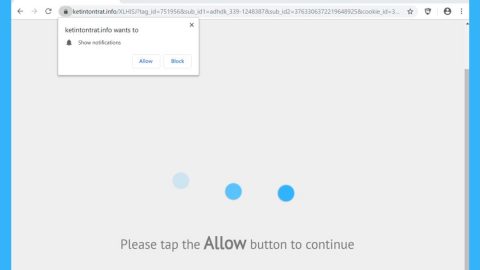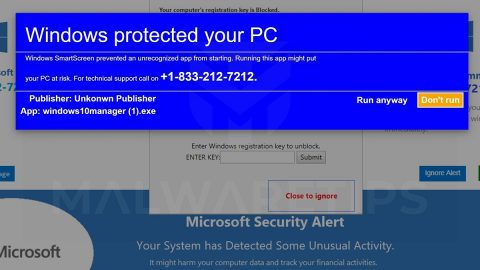
If you get an error message that says, “Please insert a disk into Removable Disk” when you plug a removable drive or pen drive or any USB drive on your Windows 10 PC, this post will show you what to do. There are times when simply re-inserting the USB driver fixes the problem but if you’ve already tried it and it’s a no go, then check out the following options below.
Option #1 – Try to change the letter to the drive
You can try changing the letter on your USB drive if you find that it works just fine on other PCs except yours. So if your PC is the one that’s causing the problem due to the conflict in the drive letter, you can fix it right away by changing the drive letter. Follow the steps below to do so.
- Insert the removable disk again and open File Explorer.
- After opening File Explorer, you should see This PC on your left hand side – right click on it and then select “Manage”.
- Next, under Storage, click on Disk Management and if you see the removable disk in the list, right click on it and then select the option “Change Drive Letter and Paths for [current-drive-letter]”.
- After that, you should see a “Change” button which you have to click. Then select a new drive letter for the removable disk and click the OK button.
- Restart your PC and see if changing the drive letter fixed the problem.
Option #2 – Try using the Hardware and Devices troubleshooter
You will see the Hardware and Devices troubleshooter under the Troubleshooters section of the Windows Settings panel on your Windows 10 PC. You can use this troubleshooter to fix common hardware and external device-related issues without exerting too much effort. If you don’t know where to find it, follow these steps:
- Tap the Win + I keys to open the Windows Settings.
- Next, navigate to Update & Security > Troubleshoot.
- You should see the option for Hardware and Devices on your right hand side where you can also find the “Rub the troubleshooter” button – click on it to get started.
- Follow the next on-screen instructions to fix the basic issues of common hardware and external device.
Note: If you want to, you can also use the USB Troubleshooter to fix the problem just go back to the Troubleshoot page where you can find it. And if your removable disk was also not detected by other Windows PCs and they just show the same error message (“Please insert a disk into Removable Disk”), you can follow the next two options below.
Option #3 – Try formatting your USB drive using the Command Prompt
Even though this option may take a lot of your time, it is proven to fix the “Please insert a disk into Removable Disk” error as reported by many users who also went through the same dilemma. So if the removable disk is showing the same error message no matter which computer you insert it, you might have to format the drive with the help of Command Prompt. But before you do that, you must know that all the contents of your drive will be permanently deleted after you format it.
- Tap Win + R to launch Run.
- Type in cmd and then tap Enter or click OK to open the Command Prompt.
- And in the elevated window of Command Prompt, type in the following command:
format F: /fs:ntfs
In the command given above, “F” is the drive letter and “ntfs” is the file system you want. Just remember to replace “F” with the drive letter you want to format as well as the file system you prefer. Brace yourself as this process might take quite a while even if you only have a 4 GB USB drive – so you must not close the window under any circumstances as the drive might get corrupted and wait for the process to finish.
Option #4 – Delete the Volume or the Partition
Formatting the disk does not necessarily mean that you won’t get any more issues as there are times when the existing partition creates issues as well. So if that’s the case after you formatted your drive, you have to delete the volume or the partition through the Disk Management.
- Open the Disk Management and right click on the external drive.
- Select the option “Delete Volume”.
- After that, right click on the same external drive and select the “New Simple Volume” option.
- Then follow the next screen options so that you can assign the allocation size, drive letter and so on. Once you complete this process, insert the removable drive again and see if it now works.
If there are any other computer issues that have been bugging you for some time now such as corrupted registries or slow PC performance, you can try a one-click solution in the form of PC Cleaner Pro. This program is a useful tool that could repair corrupted registries and optimize your PC’s overall performance. Aside from that, it also cleans out your computer for any junk or corrupted files that help you eliminate any unwanted files from your system.
Perform a full system scan using PC Cleaner Pro. To do so, follow the instructions below.
- Turn on your computer. If it’s already on, you have to reboot
- After that, the BIOS screen will be displayed, but if Windows pops up instead, reboot your computer and try again. Once you’re on the BIOS screen, repeat pressing F8, by doing so the Advanced Option shows up.
- To navigate the Advanced Option use the arrow keys and select Safe Mode with Networking then hit
- Windows will now load the SafeMode with Networking.
- Press and hold both R key and Windows key.
- If done correctly, the Windows Run Box will show up.
- Type in explorer http://www.fixmypcfree.com/install/pccleanerpro
A single space must be in between explorer and http. Click OK.
- A dialog box will be displayed by Internet Explorer. Click Run to begin downloading PC Cleaner Pro. The installation will start automatically once a download is done.
- Click OK to launch the program.
- Run the program and click the Click to Start Scanbutton to perform a full system scan.
- After all the infections are identified, click the FIX ALL.















